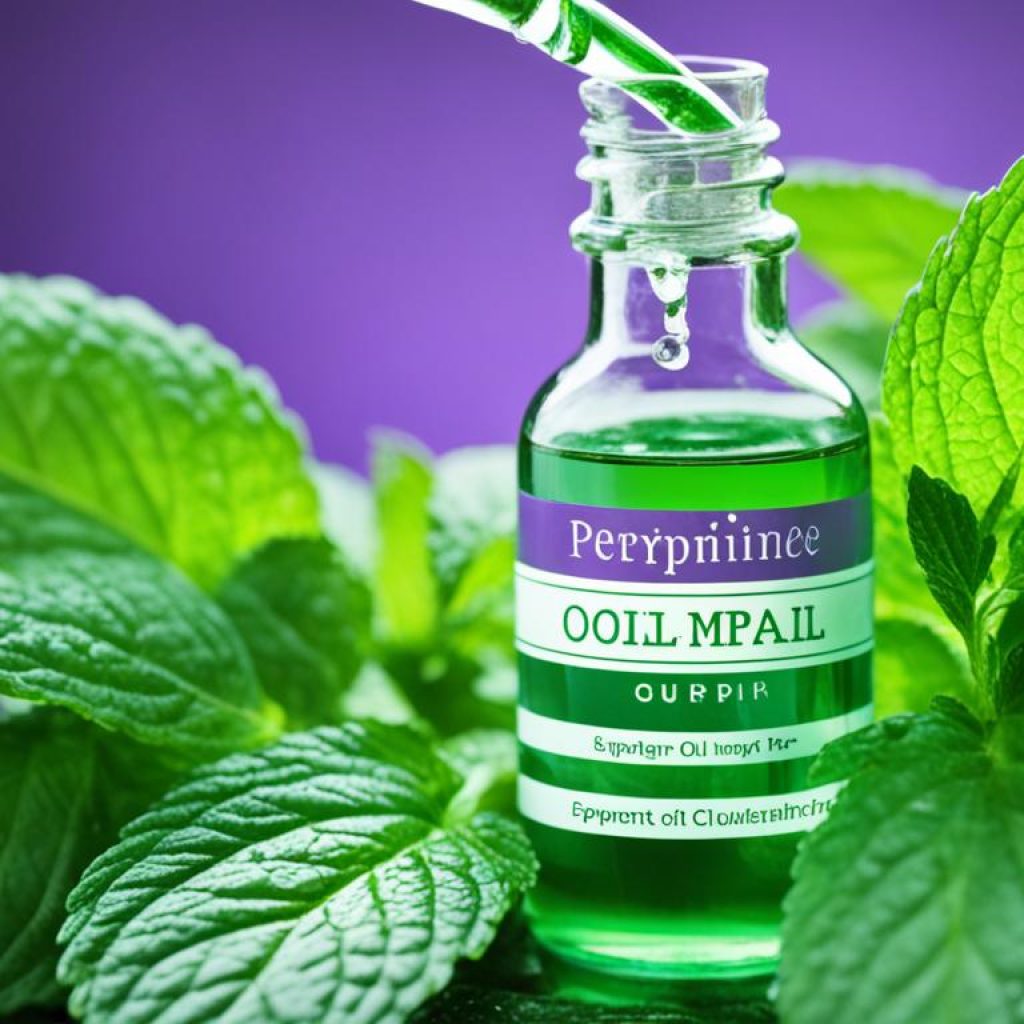Over 39 million people in the U.S. struggle with migraines, a common neurological disorder. These attacks can mess with one’s daily routine and work life. Luckily, natural remedies and preventive methods offer relief without needing meds.
Key Takeaways:
- Various natural solutions can prevent and ease migraine pain.
- Changing what you eat, using essential oils, practicing acupressure, doing yoga, and more can ease migraine discomfort.
- Staying away from foods that trigger migraines, like those with nitrates or MSG, is crucial.
- Lavender oil, acupuncture, feverfew, peppermint oil, ginger, yoga, biofeedback, and magnesium might help against migraines.
- Always talk to a doctor to make a plan that suits your needs for preventing migraines.
Avoid Certain Foods to Prevent Migraines
Some foods might trigger migraines. It’s key to know which foods do this and steer clear of them. This helps stop migraine attacks. Common triggers include:
- Foods with nitrates, like hot dogs and deli meats
- Chocolate
- Aged cheese
- Alcohol, especially red wine
- Foods with monosodium glutamate (MSG)
- Processed foods
- Pickled foods
- Beans
- Dried fruits
- Cultured dairy products
Keeping a food diary is smart. It helps figure out which foods may cause your migraines. Note what you eat and if you get a migraine afterward. This can show what changes you might need to make.
The Nitrate Controversy
Although avoiding foods with nitrates is advised, not everyone agrees they’re linked to migraines. Some research says nitrates might cause headaches, but other studies aren’t sure. Still, eating less nitrates might help avoid migraines.
It’s also vital to watch out for personal trigger foods. What affects one person might not bother another. By knowing your triggers, you can adapt your diet. This helps in fighting migraines.
| Food Category | Specific Foods |
|---|---|
| Foods with Nitrates | Hot dogs, deli meats |
| Chocolate | |
| Aged Cheese | |
| Alcohol | Red wine |
| MSG | Food containing monosodium glutamate |
| Processed Foods | |
| Pickled Foods | |
| Beans | |
| Dried Fruits | |
| Cultured Dairy Products |
Apply Lavender Oil for Migraine Relief
Lavender oil is a well-liked natural remedy for migraines. It helps lessen the frequency and severity of migraine attacks. Using it as a preventive treatment shows promising outcomes in reducing migraines. It’s a comforting, whole-body approach to migraine relief.
Inhaling lavender essential oil or applying it on the temples works well. The scent of lavender oil aids in relaxation and reduces migraine symptoms. Applying it directly can offer relief right where it hurts.
Try Acupuncture for Migraine Prevention
Acupuncture is a part of traditional Chinese medicine. It’s used as an alternative treatment for migraines. By inserting thin needles at specific body points, it reduces migraine symptoms. It also prevents attacks. Studies show combining it with standard care works better than sham acupuncture or medications alone.
Research says acupuncture can lessen how often and how severe migraines are. It may adjust neurotransmitters in the brain. These are linked to pain and migraine relief.
Though more research is needed, acupuncture looks promising. It’s a natural and holistic approach to dealing with headaches. By fixing body imbalances, it aims to bring back harmony. This could reduce the need for medication.
How Does Acupuncture Work for Migraines?
We’re still figuring out how acupuncture helps with migraine prevention. It seems to activate the nervous system and release endorphins. Endorphins are our natural painkillers. This might lower migraine pain and inflammation.
“Acupuncture targets specific body points to rebalance and heal. For those with migraines, it could cut down on how often and how severe their headaches are. This offers a natural headache relief option.”
Acupuncture might also improve blood flow and circulation. This eases tension and helps you relax. By tackling root imbalances, it could prevent or lessen migraine triggers and symptoms.
The Effectiveness of Acupuncture for Migraines
Studies on acupuncture for migraines are promising. A review found that it reduces migraines more effectively when added to standard care. This was compared to fake acupuncture or just medication.
Another study showed acupuncture was as good, or better, than preventative medicine. It had fewer migraines. Researchers think acupuncture is a good alternative or addition to migraine treatment.
| Study | Participants | Results |
|---|---|---|
| Randomized controlled trial | 300 participants | Acupuncture group saw a big drop in how often they had migraines. |
| Meta-analysis | 1,800 participants | Those who got acupuncture reported fewer migraines than those who didn’t. |
| Systematic review | Multiple studies | Acupuncture is viewed as a promising add-on or alternative to usual care. |
Even though we need more research, existing studies show acupuncture’s potential. It seems like a viable alternative for migraine treatment.
Acupuncture for migraines is safe and non-invasive. Make sure to see a qualified and licensed acupuncturist for proper care. They will customize the treatment based on your migraine triggers and symptoms. This personalizes your prevention plan.
Considering acupuncture could help you manage migraines better. Plus, it might boost your overall health.
Consider Feverfew as a Natural Migraine Remedy
Feverfew is a herb used for headaches. Some research supports it for migraines, but more is needed. Despite this, many think it’s worth trying as a natural option.
The name “febrifugia” means “fever reducer” in Latin. People have used feverfew for headaches and other issues. It may work by lowering inflammation and stopping blood vessels in the brain from narrowing. This could help prevent migraines.
You can find feverfew in capsules, tablets, teas, or tinctures. The right dose can vary. So, talking to a healthcare provider before trying feverfew is smart.
Feverfew’s effects on migraines are still under study. Not everyone might find it helpful. But if you’re into natural remedies, discussing feverfew with a doctor could be good. They can see if it fits your health needs.
Studies on Feverfew for Migraines:
“Feverfew has potential as a migraine remedy, but needs more study,” says research. A Journal of Pharmacy and Pharmacology study found it lessened migraines for some. Yet, results vary, pointing to the need for more research.
Trying feverfew for migraines means results can differ. Partner with a healthcare pro to make a plan that suits you and your health history.
Summary:
Though not all studies fully back feverfew for migraines, some see its potential. If looking for a natural remedy, feverfew could be an option. Always check with a healthcare provider to ensure it’s right for you.
Apply Peppermint Oil for Migraine Relief
Peppermint oil is a go-to natural remedy for migraines. It’s popular because it contains menthol. Menthol helps ease pain and cools the skin, helping fight migraine symptoms.
Studies on peppermint oil are ongoing, yet signs of its effectiveness are positive. It seems especially useful when mixed with lidocaine. Putting peppermint oil on your temples or forehead might reduce your pain and discomfort.
To use peppermint oil for migraines, follow these steps:
- Mix a few drops of peppermint oil with a carrier oil like coconut or almond oil.
- Apply this mix to your temples, forehead, or back of your neck.
- Massage the oil into your skin with circular motions.
- Breathe in deeply to enjoy peppermint’s refreshing scent.
Remember, peppermint oil helps some people, but not everyone. It’s wise to talk to a healthcare professional before trying it for migraines. This is especially important if you’re on medication or have health issues.

| Benefits of Peppermint Oil for Migraine Relief | How to Use Peppermint Oil for Migraines |
|---|---|
| 1. Pain Relief: The menthol in peppermint oil has pain-relieving properties that can help alleviate migraine symptoms. | 1. Dilute the essential oil. 2. Apply the mixture to your temples, forehead, or the back of your neck. 3. Massage the oil into your skin. 4. Inhale the aroma deeply. |
| 2. Cooling Effect: The cooling sensation of peppermint oil can provide soothing comfort during a migraine attack. | |
| 3. Relaxation: The aroma of peppermint oil has a calming effect that can help promote relaxation and reduce stress. | |
| 4. Convenient and Portable: Peppermint oil is easy to carry and can be used anytime, anywhere, making it a convenient option for migraine relief. |
Explore the Benefits of Ginger for Migraine Relief
Ginger is not only a popular spice but also has a rich medicinal history. It’s known for helping with various health issues, including migraines. Studies show it can reduce pain and ease other migraine symptoms.
Its anti-inflammatory qualities are a key reason many turn to ginger for migraine relief. Inflammation often triggers migraines. The compounds in ginger, like gingerols, fight this inflammation, which can lessen migraine severity.
Ginger can also reduce nausea and vomiting that come with migraines. Its natural compounds calm the stomach and digestive system. This helps relieve discomfort during a migraine.
Adding ginger to your diet is easy. You can use fresh ginger in your meals, drink ginger tea, or try infused water. Ginger supplements and candies are also available for ease. But remember, results can vary from person to person. Always talk to a healthcare professional before trying new remedies or supplements.
Embrace the Healing Power of Yoga for Migraine Prevention
Yoga is more than just an exercise. It’s a blend of physical poses, breath work, and meditation that fosters health. It’s especially known for its soft but strong way to help with migraines. By adding yoga to your life, you can fight off migraines in a natural way.
Research backs up yoga’s effectiveness for migraine relief. A study in the American Journal of Lifestyle Medicine showed less frequent and milder migraines in those who did yoga for three months. They felt better overall.
Yoga combines movement, deep breaths, and relaxation to ease stress and tension, common migraine triggers. The breathing and meditation in yoga can also make your mind calmer and reduce stress.
Specific yoga poses target areas where migraines can start. They help relax muscles and improve blood flow. This brings relaxation and ease.
If yoga is new to you, start with beginner classes or find a skilled teacher. They’ll ensure you do poses correctly and safely, fitting your personal health needs.
Here are some yoga poses to help prevent migraines:
- Child’s Pose (Balasana): A relaxing pose that eases tension in your back, neck, and shoulders.
- Downward-Facing Dog (Adho Mukha Svanasana): Stretches your body, helping you feel released and stretched.
- Triangle Pose (Trikonasana): A standing pose that stretches your sides, opens your chest, and helps with posture.
- Seated Forward Bend (Paschimottanasana): Relaxes the back and hamstrings and calms your mind.
Being consistent with yoga is key to preventing migraines. Try to practice for 30 minutes, several times a week. Adding meditation and breathing exercises daily can also help.
Benefits of Yoga for Migraine Prevention:
| Benefits | Explanation |
|---|---|
| Reduces frequency, duration, and intensity of migraines | Yoga lowers how often and how severe migraines are, improving life quality. |
| Relieves muscle tension and promotes relaxation | Poses and breath work in yoga ease tension in key areas, reducing anxiety and offering relief. |
| Calms the mind and reduces stress | Meditation and controlled breathing through yoga make your mind calmer, lowering stress and migraine triggers. |
| Improves blood circulation | Yoga boosts blood flow to the brain, lowering migraine risks and boosting wellness. |
| Enhances body awareness | Yoga increases body awareness, helping you spot early migraine signs for quick action. |
“Yoga is not just about physical exercise, but a holistic practice that can greatly benefit individuals struggling with migraines. By incorporating yoga into your routine, you can cultivate balance, relaxation, and well-being, reducing the frequency and severity of migraine attacks.” – Dr. Jessica Patel, Integrative Health Specialist
Harness the Benefits of Biofeedback for Migraine Relief
Biofeedback is a powerful way to connect your mind and body to ease migraines. It uses electronic sensors to watch your heart rate and muscle tension. This helps you learn to control these processes. You can manage stress and maybe reduce your migraine pain.
Research shows that biofeedback and cognitive behavioral therapy work well together for migraines. This therapy lets you actively manage your migraines. You’ll develop skills to regulate your body.
“Biofeedback empowers individuals to tap into their body’s natural ability to heal and reduce pain, providing a non-pharmacological option for migraine relief,” emphasizes Dr. Jane Roberts, a leading neurologist specializing in integrative medicine.
Biofeedback is safer than many medications because it has fewer side effects. It’s a non-invasive, natural option for migraine relief.
In a biofeedback session, sensors on your body measure your responses. This info is shown on a monitor. You see how your thoughts and feelings affect your body. With practice, you learn to control these responses. This helps you relax and manage stress better.
How Biofeedback Can Help with Migraines:
- Biofeedback for Migraines: It helps you find what triggers your migraines. By watching your body’s signals, you learn about your migraine patterns. You can then make changes to lessen your migraines.
- Mind-Body Techniques for Headache Relief: Biofeedback helps you understand the mind-body link. You learn to relax and control your body. Skills like deep breathing and muscle relaxation can reduce stress. This means fewer migraines.
- Alternative Treatments for Migraines: Biofeedback is a known migraine treatment offering a holistic approach. Adding biofeedback to your plan, along with diet and exercise, can improve your migraine care.
If you’re thinking about trying biofeedback for migraines, talk to a certified therapist. They specialize in headaches and can make a plan that fits you.
Biofeedback gives you a way to control your migraines naturally. Start your journey to mind-body healing today.

Incorporate Magnesium into Your Diet for Migraine Prevention
Lacking magnesium might lead to migraines. It’s crucial for stopping headaches before they start. Studies suggest that magnesium supplements can work just as well as medicine for preventing migraines. Plus, eating foods rich in magnesium is a natural way to ease headaches.
Here are some foods high in magnesium that can help keep migraines away:
| Food | Magnesium Content (per serving) |
|---|---|
| Almonds | 77 mg |
| Sesame Seeds | 101 mg |
| Sunflower Seeds | 116 mg |
| Pumpkin Seeds | 156 mg |
| Spinach | 78 mg |
| Swiss Chard | 150 mg |
| Avocado | 58 mg |
| Banana | 32 mg |
Add these magnesium-rich foods to your meals and snacks to boost your intake. But remember, more magnesium isn’t always the answer for everyone.
Talk to a doctor before making big changes to your diet or starting new supplements. It’s the safest way to go.
Magnesium supplements are another way to fight migraines. You can find them in types like magnesium oxide, citrate, and glycinate. Always check with a healthcare professional to figure out the best type and dose for you.
Magnesium can help prevent migraines, but it’s not the only solution. It’s also key to look at other natural headache relief methods and lifestyle modifications. Together, these steps can create a comprehensive plan for managing migraines.
Conclusion
Migraine attacks greatly affect everyday life. But there’s hope with natural prevention strategies. These strategies can improve well-being and bring relief.
Steering clear of trigger foods is key. This means avoiding processed, pickled foods, alcohol, and nitrates. Adding essential oils like lavender and peppermint helps. Trying out acupuncture and yoga, and managing stress are also beneficial.
Sometimes, medication is still needed. Yet, natural methods can lessen migraines’ frequency and harshness. Working with a healthcare professional is vital. They help create a plan that blends natural and medical approaches for the best outcome.
Embracing a broad approach to prevent migraines is empowering. By using natural strategies, you can forge a path to a better life.

